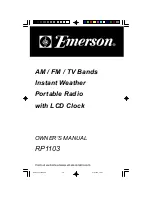
Exalt Installation and Management Guide
ExtendAir (TDD) Series Digital Microwave Radios
203591-010
37
2012-09-04
Summary Status Section
This section of the Exalt GUI provides a review of the system status.
In the screens in Figure 17, the top bar illustrates the alarm condition of the link. The information
inside the bar is equivalent to the entry of the Link Name set by the administrator in the
.
The color of the panel indicates alarm status:
•
Green indicates the system is communicating and all functions are normal
•
Yellow indicates a minor non-traffic affecting alarm condition
•
Red indicates a major traffic affecting alarm condition
The left panel summarizes the alarm conditions of the local radio (the radio that matches the IP
address). The information displayed is the IP address and the endpoint identifier (Radio A or Radio B).
The right panel summarizes the alarm conditions of the remote radio (the radio linked to the local
radio).
The Summary Status Section allows the Exalt GUI to be a rudimentary management system. Minimize
the browser window to display just the top bar or the top bar and radio information, and open several
browsers on the desktop. When a window status changes to yellow or red, you can quickly maximize
that window to determine the issues.
Figure 18 Summary status information
Click the radio IP address link to access that radio for management.
Note:
The ‘local’ radio might be the near-end or the far-end radio
, depending on
the management interface connection. The terms local and remote refer to the orientation of
the radio terminals relative to the IP address you are managing. When making certain changes
to a near-end radio without first making changes to the far-end radio, the link may become
disconnected unless configuration changes are reverted to their original settings. When
making changes that may disrupt the link,
always change the far-end radio first, and
then the near-end radio to match
.
Summary of Contents for ExtendAir r40 series
Page 150: ...203591 010 2012 09 04...
















































